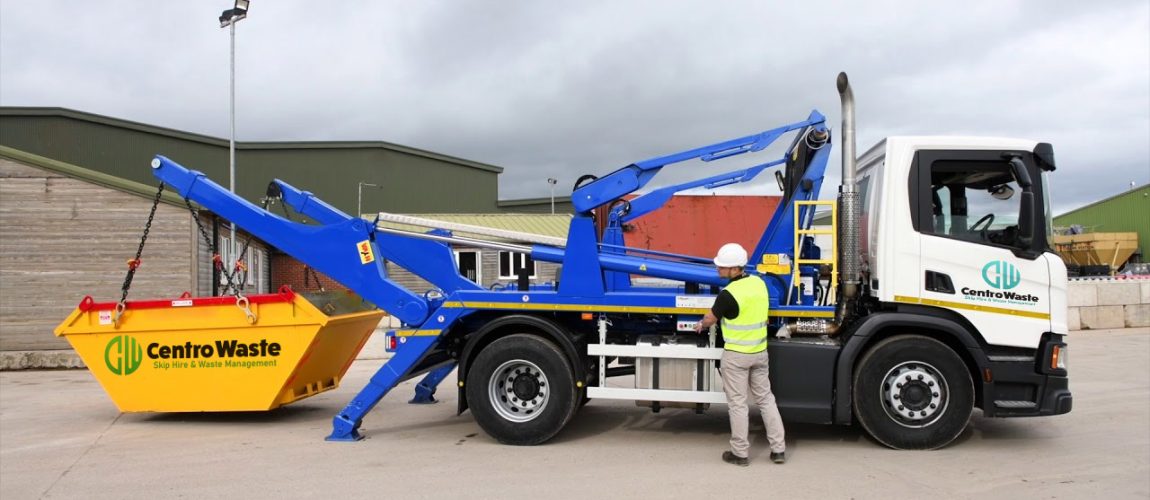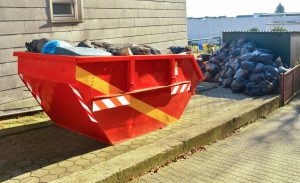Whether you’re planning a significant home renovation project or just doing a thorough spring clean, handling waste efficiently and responsibly is a critical part of the process. One popular solution to manage and dispose of large amounts of waste is a skip delivery service. Preparing for a skip delivery can ensure a smooth stress-free skip hire service.
Skips, or dumpsters as they’re known in some regions, provide a convenient and efficient way to gather, remove, and dispose of waste materials. But before you dial the number of your local skip delivery service, there are a few things you need to know and prepare.
Skip delivery services not only offer a practical solution to waste disposal but also help maintain a safe working environment by keeping the site clean and orderly. Understanding the dynamics of skip delivery can make your waste management process smoother and more efficient.
This guide will provide you with key insights on different types of skips, factors to consider when choosing a skip, preparation steps for skip delivery, ways to maximise your skip usage, and how to dispose of your waste in an environmentally responsible way.
Understanding Different Skip Sizes
While “skip” may sound like a one-size-fits-all solution, it’s important to understand that skips come in various sizes to accommodate different volumes and types of waste. The unit of measure for skip size is typically the yard, with common sizes including 2, 3, 4, 5, 6, and 8-yard skips. Let’s take a closer look at these.
2-Yard Skips
Ideal for small domestic projects such as minor garden clearances or small household clear-outs, a 2-yard skip can typically hold around 20-30 bin bags of waste. This makes it perfect for tasks that are a bit too large for your standard waste bin but don’t warrant a larger skip.
3-Yard Skips
A 3-yard skip provides a slightly larger capacity, suitable for small to medium-sized tasks. This could include garden work or a small kitchen or bathroom renovation. It can typically hold around 30-40 bin bags of waste.
4-Yard Skips
Often termed as midi skips, 4-yard skips are convenient for medium-sized domestic projects. It’s ideal for tasks like larger garden clearances, substantial household clear-outs, or small construction projects. They can usually contain approximately 40-50 bin bags of waste.
5-Yard Skips
A 5-yard skip is a versatile size that straddles the line between domestic and commercial use. It’s useful for larger household projects or minor commercial jobs and can hold about 50-60 bin bags of waste.
6-Yard Skips
The 6-yard skip, also known as the small builders skip, is a common choice for construction and building projects. It’s big enough to handle heavy waste materials and is often used for medium-sized renovation or construction tasks. It can generally accommodate around 60-70 bin bags of waste.
8-Yard Skips
The 8-yard skip, often referred to as the large builders skip, is the largest size typically used for heavy-duty projects. It’s ideal for major construction, renovation, or large garden landscaping projects. It can comfortably contain around 80-90 bin bags of waste.
Factors to Consider When Choosing a Skip
Choosing the right skip for your project is crucial for efficient waste management and avoiding any potential logistical or legal issues. Below are some factors you should consider when making your choice.
The Size of the Project
The scale of your project will determine the size of the skip you’ll need. For small domestic projects, a mini skip might be sufficient. In contrast, larger renovation or construction projects may require a builder’s skip. Remember, it is better to overestimate a bit than underestimate the size required, as overloading skips is generally not permitted.
Types of Waste Materials
Different types of waste can require different types of skips. Most waste types can go into a standard skip, but for certain materials, such as asbestos or electronic waste, you might need a specialised skip or a different disposal method altogether.
Location of the Project
Consider the space you have available for skip placement. Ensure there’s enough room for the skip delivery truck to safely deliver and collect the skip. Remember, larger skips require more space.
Duration of the Project
If your project is expected to last several days or even weeks, you will need to consider where the skip will be placed for this period. For longer projects, you might need to arrange for the skip to be emptied and returned.
Budget Considerations
Skip hire costs vary depending on the size of the skip, the hire duration, and your location. Be sure to consider these factors and get quotes from multiple providers to ensure you are getting value for your money.
Remember, it’s crucial to liaise with your skip hire company about your specific requirements. They can provide you with advice based on their experience and expertise, ensuring you choose the most appropriate skip for your project.
How to Prepare for Skip Delivery
Preparing for skip delivery involves a few crucial steps that you need to consider for a smooth and efficient process. Firstly, it’s important to clear a sufficient amount of space for the skip. This space needs to be easily accessible for the delivery truck and should be convenient for you to carry waste to. Skips are heavy, even more so when filled, so they should be placed on a solid, level surface to avoid causing damage.
Next, consider the access and safety issues associated with the delivery and placement of the skip. If the skip lorry needs to cross over a sidewalk, lawn, or driveway, you may need to provide planks or boards to distribute the weight and protect these surfaces. Also, ensure there are no overhead obstructions like power lines or tree branches that could impede the delivery or collection of the skip.
If the skip needs to be placed on public property such as a street, you’ll usually need a permit from your local council. This often requires some time to arrange, so plan accordingly. Your skip-hire company can often assist with this process, but it’s a good idea to check the regulations in your area beforehand.
Conclusion
Skip delivery provides an effective and efficient way to handle waste, whether you’re tackling a home renovation, a garden overhaul, or a construction project. However, to maximise the benefits of this service, preparation and understanding are key. Knowing the different types of skips, from 2-yard mini skips to 8-yard builders skips, helps you match the right skip size to your project’s needs.
Moreover, understanding the factors to consider when choosing a skip – such as the project size, waste type, location, duration, and budget – allows for a more streamlined waste management process. Proper preparation for skip delivery, which includes clearing space, considering access and safety, obtaining necessary permits, sorting waste, and estimating the correct skip size, ensures a smooth delivery and collection process.
Get in touch with us today for further details on our skip hire services.








